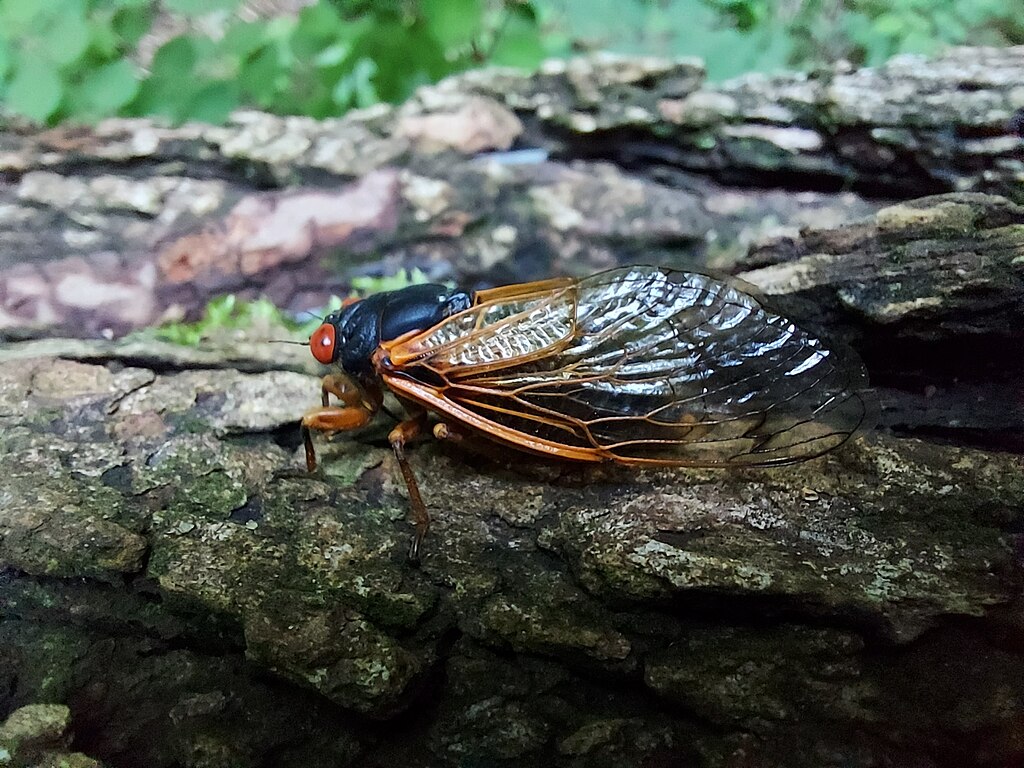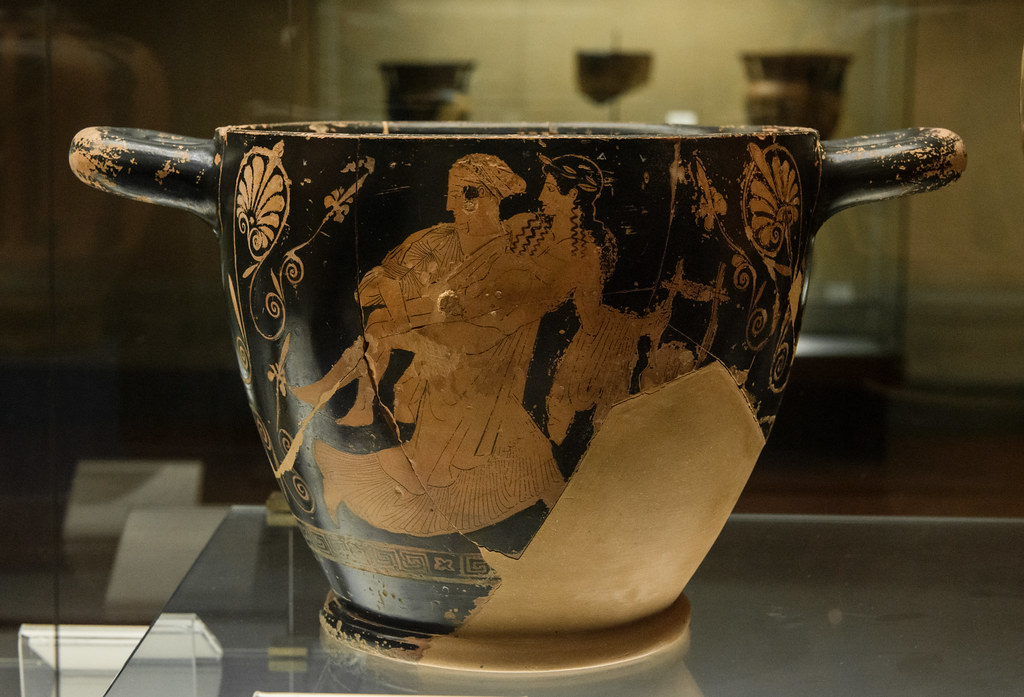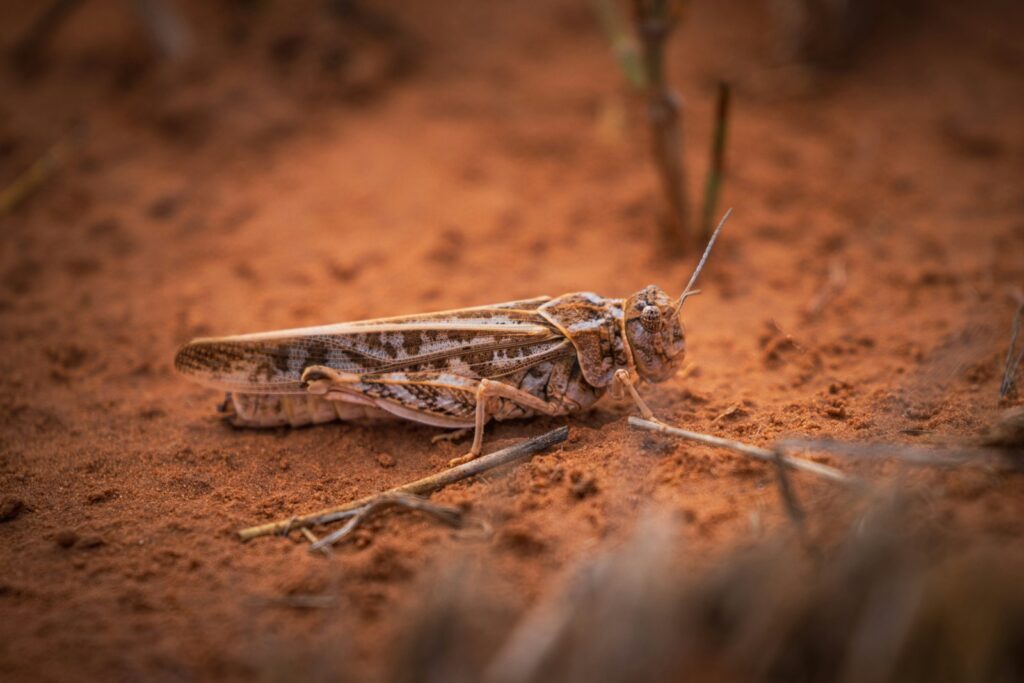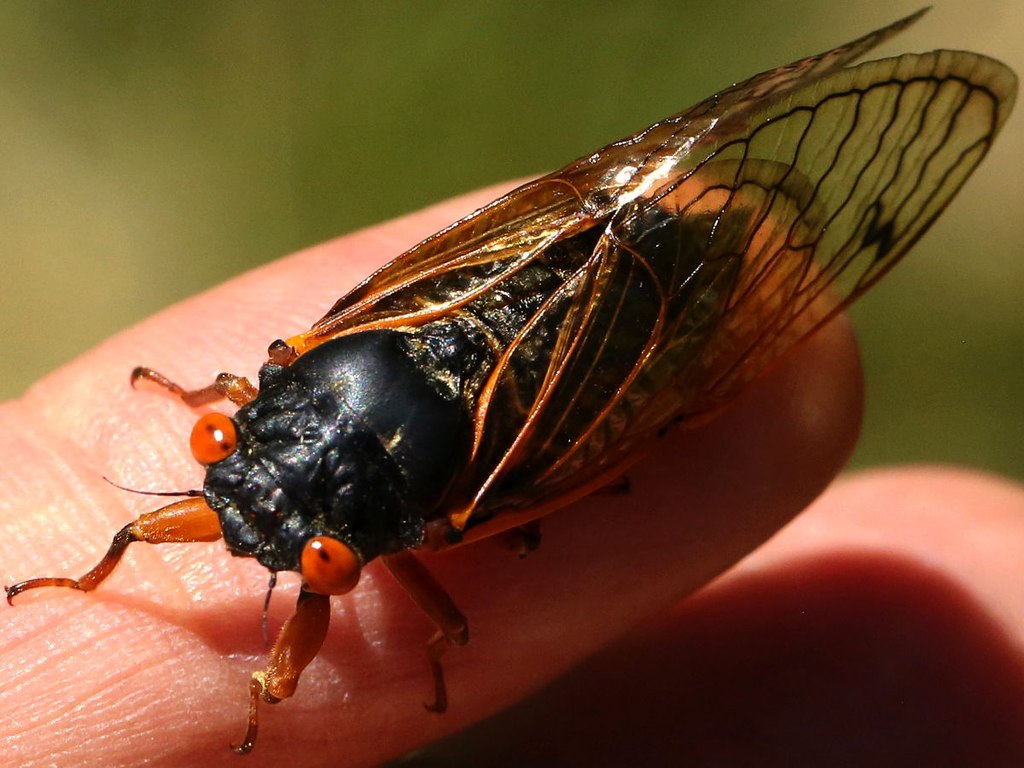Throughout human history, cicadas have captivated our imagination with their mysterious life cycles and sudden, overwhelming emergences. These remarkable insects spend years—sometimes more than a decade—underground before erupting in massive numbers that can transform landscapes and soundscapes alike. Such dramatic appearances have naturally found their way into religious texts, apocalyptic literature, and cultural mythologies worldwide. From ancient civilizations to modern religious interpretations, cicadas have been viewed as harbingers of change, symbols of resurrection, and even omens of the end times. This fascinating intersection of entomology and eschatology reveals much about how humans interpret natural phenomena through spiritual lenses, particularly when those phenomena seem otherworldly or biblical in scale.
The Biological Reality Behind the Myths

Before diving into mythology and religious interpretations, understanding the actual biology of cicadas provides crucial context. Cicadas belong to the superfamily Cicadoidea, with over 3,000 species worldwide, separated into annual and periodical cicadas. The periodical cicadas of North America, belonging to the genus Magicicada, are perhaps the most famous, emerging in massive broods every 13 or 17 years. This synchronous emergence, where billions of insects appear simultaneously after years underground, represents one of nature’s most remarkable survival strategies. The evolutionary advantage lies in predator satiation—emerging in such overwhelming numbers that predators cannot possibly consume them all, ensuring species survival. Their red eyes, black bodies, and the males’ deafening chorus create a truly dramatic natural event that early settlers and indigenous peoples alike could hardly ignore.
Biblical Interpretations and the Plague Connection

The Bible contains numerous references to plagues of insects, most famously the locust plague in Exodus, which has sometimes been connected to cicadas in interpretations. While locusts and cicadas are entirely different insects, their shared characteristic of appearing suddenly in overwhelming numbers has led to conflation in religious texts and folklore. In Revelation 9:3, “And out of the smoke locusts came down on the earth and were given power like that of scorpions of the earth,” some biblical scholars have seen parallels to cicada emergences, particularly when translated across different languages and cultures. Some Christian eschatological interpretations view the periodic nature of cicada emergences as divine timekeepers, marking periods that align with biblical prophecies. The locusts described in Revelation with “faces resembling human faces” and “wearing something like crowns of gold” have been compared to cicadas with their distinctive exoskeletons and prominent eyes.
Ancient Chinese Reverence for the Cicada

In ancient China, cicadas held profound symbolic importance that contrasts sharply with apocalyptic interpretations. Chinese culture viewed the cicada as a symbol of resurrection and immortality, owing to its remarkable life cycle of emerging from the earth after years underground. Jade cicadas were placed in the mouths of the dead during the Han Dynasty (206 BCE–220 CE), representing rebirth in the afterlife and the continuity of the soul’s journey. The insect’s molting process, where it sheds its exoskeleton to emerge in a new form, perfectly embodied the Taoist concepts of transformation and transcendence. Far from being harbingers of doom, cicadas in Chinese mythology represented nobility and purity, as they were believed to sustain themselves on dew and wind rather than consuming plants or other creatures—a misconception that nonetheless elevated their spiritual status.
Greek and Roman Mythology: Immortality and Metamorphosis

Ancient Greek and Roman cultures associated cicadas with immortality and rebirth, themes that echo across many cultural interpretations of these insects. In Greek mythology, Tithonus was granted immortality but not eternal youth, eventually transforming into a cicada—forever living but continuously aging. This myth captures the Greek fascination with cicadas as creatures that seemed to be reborn from the earth itself. Plato mentioned cicadas in “Phaedrus,” suggesting they were once humans who became so enchanted with the Muses’ songs that they forgot to eat or drink, eventually transforming into cicadas who continued to sing without nourishment. The philosopher Aristotle studied cicadas extensively, noting their unusual life cycle and distinguishing between “singing” males and silent females. The Romans adopted many Greek perspectives on cicadas, viewing them as symbols of nobility and music rather than harbingers of apocalypse.
Native American Interpretations and Folklore

Indigenous North American tribes developed diverse interpretations of cicada emergences based on their observations of these insects over countless generations. For the Onondaga Nation, part of the Haudenosaunee (Iroquois) Confederacy, cicadas served as natural timekeepers and agricultural indicators, signaling when to plant certain crops. The Cherokee incorporated cicadas into creation stories, where their emergence from the ground symbolized the earth’s regenerative powers. Some Plains tribes viewed massive cicada emergences as messages from ancestor spirits, representing the cyclical nature of life and death. Unlike apocalyptic interpretations, many Native American perspectives emphasized harmony with these natural cycles, seeing in cicadas a reflection of greater cosmic patterns rather than omens of destruction. The predictable periodicity of cicadas provided a reliable natural calendar that helped structure agricultural activities and cultural ceremonies.
Cicadas in Modern Apocalyptic Thinking

Contemporary interpretations of cicada emergences as apocalyptic omens have flourished in certain religious communities, particularly during significant brood years. When Brood X emerged across the eastern United States in 2021, numerous online forums and religious groups connected this biological event with end-times prophecies, citing the “plague-like” appearance and biblical-sounding numbers. The red eyes of periodical cicadas particularly resonate with apocalyptic imagery, as do their emergence from the ground (likened to resurrection) and their overwhelming presence. Social media has amplified these connections, with viral videos comparing cicada emergences to scenes from Revelation. Some fringe religious groups have incorporated specific cicada broods into their eschatological timelines, calculating future emergences against predicted apocalyptic events. This phenomenon demonstrates how natural events continue to be integrated into religious frameworks, particularly when they appear dramatic or unusual.
The Mathematical Mystery: Prime Number Cycles

One of the most fascinating aspects of periodical cicadas that has fueled both scientific inquiry and religious speculation is their prime-numbered life cycles of 13 and 17 years. Evolutionary biologists have determined that these prime-numbered cycles evolved because they minimize the chances of predators synchronizing with cicada emergences or of different broods hybridizing. However, for those inclined toward numerical mysticism or biblical numerology, these prime numbers carry special significance. In biblical numerology, 17 is sometimes associated with victory or resurrection, while 13 has complex connotations including rebellion and apostasy. Some religious interpreters have connected these numbers to biblical prophecies, particularly those in Revelation or Daniel, suggesting divine design in cicada life cycles. The mathematical precision of cicada emergences—occurring exactly on schedule after years underground—adds to their mystical aura and potential interpretation as cosmic timekeepers.
Japan’s Cultural Embrace of the Cicada

Japanese culture stands out for its deep appreciation of cicadas (semi in Japanese) as symbols of summer and impermanence rather than apocalyptic harbingers. Cicadas feature prominently in Japanese literature, haiku poetry, and art, where their songs represent the fleeting nature of summer and, by extension, life itself. The concept of mono no aware—the pathos of things or sensitivity to impermanence—is beautifully expressed through cultural references to cicadas, whose adult lives last only a few weeks after years of waiting. In anime and manga, cicadas often provide ambient sound that establishes summer settings, creating an instantly recognizable auditory landscape. Far from fearing cicada emergences, many Japanese children collect cicada exoskeletons (semi no nukegara) as a summer pastime, celebrating these insects as part of natural seasonal rhythms. This cultural embrace offers a striking contrast to Western apocalyptic interpretations, demonstrating how the same natural phenomenon can be viewed through radically different cultural lenses.
Cicadas in Modern Religious Movements

Several contemporary religious movements have incorporated cicadas into their doctrines, viewing their emergences as significant spiritual events rather than mere biological phenomena. The Church Universal and Triumphant, a New Age religious organization, has interpreted cicada cycles as evidence of cosmic synchronicity and as verification of their belief in cyclical time rather than linear progression. Some Seventh-day Adventist writers have explored connections between cicada emergences and prophetic time periods mentioned in Daniel and Revelation, though these remain speculative rather than official doctrine. In parts of Appalachia, folk Christian traditions include timing revival meetings to coincide with periodical cicada emergences, believing these times represent spiritual awakening and renewal. What unites these diverse interpretations is the recognition of something profoundly mysterious in the cicada’s life cycle—a natural miracle that seems to transcend mundane explanation and invite spiritual consideration.
Scientific Reality Versus Apocalyptic Interpretation

The tension between scientific explanations and religious interpretations of cicada emergences highlights broader cultural divisions in how natural phenomena are understood. Entomologists emphasize that cicada emergences, while dramatic, represent perfectly natural evolutionary adaptations rather than supernatural signs. The precise timing relies on biological mechanisms where nymphs count annual cycles of tree sap flow while developing underground. However, the psychological impact of witnessing billions of insects emerging simultaneously cannot be dismissed, as it creates a genuinely uncanny experience that easily triggers humanity’s pattern-seeking tendencies. Cognitive scientists note that apocalyptic interpretations of natural phenomena often increase during periods of social stress or uncertainty, when people seek meaning in unusual events. The gap between scientific and religious interpretations of cicadas reflects not just different explanatory frameworks but different purposes—science seeking to explain mechanisms, while religious interpretations seek to derive meaning and moral guidance from natural events.
Locusts, Cicadas, and Confused Identities

Much of the apocalyptic association with cicadas stems from their frequent confusion with locusts in religious texts and cultural understanding. Locusts are actually short-horned grasshoppers that undergo physiological changes and swarm behavior under certain conditions, causing agricultural devastation as they consume crops. Cicadas, despite their overwhelming numbers, cause minimal agricultural damage as adults, feeding primarily on tree xylem and living only a few weeks. This confusion dates back to ancient translations of religious texts, where the Greek word for cicada (tettix) and locust (akris) were sometimes used interchangeably or mistranslated. The biblical plagues of locusts described in Exodus and Revelation refer to crop-destroying grasshoppers rather than cicadas, but the visual similarity of massive insect emergences has led to persistent conflation. This mistaken identity has significantly influenced apocalyptic interpretations of cicada emergences, particularly among those unfamiliar with the biological distinctions between these insects.
Cicadas as Omens in Folk Traditions

Beyond organized religious interpretations, cicadas feature prominently in folk traditions and superstitions worldwide, often as omens or predictors. In parts of the American South, folk wisdom holds that the pitch and intensity of cicada songs can predict weather patterns—louder songs supposedly forecasting hotter weather or approaching storms. Some Appalachian traditions suggest that the pattern of markings on cicada wings can predict winter severity, similar to woolly bear caterpillar folklore. In rural Brazil, certain cicada species’ songs are believed to predict rainfall patterns, with farmers timing planting decisions accordingly. These folk interpretations demonstrate how closely humans have observed these insects throughout history, integrating them into practical knowledge systems. While not explicitly apocalyptic, these traditions reflect humanity’s tendency to view cicadas as messengers or signalers—insects that communicate information beyond their mere biological existence.
The Future of Cicada Mythology in the Climate Crisis Era

As climate change alters environments worldwide, cicada emergence patterns are showing signs of disruption, with some broods emerging years earlier than their historical cycles would predict. These changes may influence how cicadas are interpreted in religious and cultural contexts moving forward, potentially reinforcing apocalyptic associations. Climate scientists have documented cases of accelerated development in some periodical cicada populations, possibly due to warming soil temperatures altering their biological clocks. For religious communities already inclined toward end-times interpretations, these disrupted cycles may be viewed as further evidence of approaching apocalypse or divine warning about environmental stewardship. Conversely, these changes offer an opportunity for renewed religious engagement with environmental issues, potentially reframing cicadas as indicators of planetary health rather than harbingers of supernatural judgment. As humanity faces unprecedented environmental challenges, the ancient symbolism of cicadas may evolve to incorporate new meanings related to sustainability, resilience, and ecological awareness.
Conclusion

The enduring connection between cicadas and apocalyptic thinking demonstrates how deeply natural phenomena influence human religious and cultural imagination. Whether viewed as harbingers of doom, symbols of resurrection, or simply remarkable biological curiosities, cicadas occupy a special place in our collective consciousness. Their emergence from darkness into light, their overwhelming numbers, and their haunting chorus all seem designed to provoke wonder and speculation. As we continue to witness their periodic appearances, cicadas remind us of nature’s profound mysteries and humanity’s persistent desire to find meaning in the remarkable world around us. Perhaps most importantly, they demonstrate how the same natural phenomenon can be interpreted in radically different ways across cultures and belief systems, revealing as much about human psychology and cultural values as about the insects themselves.

